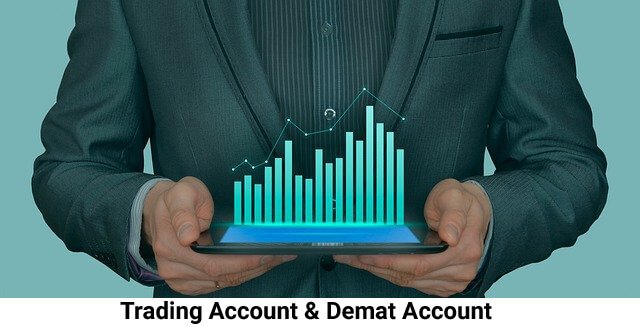You should be conscious of quite a few fundamentals if you really want to be involved in the share market. A Demat account and a trading account are two of the most crucial prerequisites of the stock exchange.
A Demat account is a type of account where you may keep your shares or even other types of investments in a dematerialized form. A trading account online allows you to exchange. Despite the notion that both accounts are critical, many individuals are confused about them. This article discusses the major differences between trading accounts and Demat accounts.

Demat Account
A Demat account helps to keep your securities in digital mode. It turns physical assets into digital forms, thus dematerializing them. When you open a Demat account online, you will indeed be granted Demat card details, which will allow you to complete your trades online.
The operation of a Dematerialized form is pretty similar to those bank accounts in that you maintain your money and have the choice to deposit and withdraw it. The assets are also kept debit and credited into your Demat wallet. Users do not require any securities to start a Demat portfolio; in fact, their account might just have a nil balance.
Trading Account
The trading account is required to perform stock trading activity. This is because when an enterprise’s shares are listed on the stock exchange, they may be traded on an automated device via a specific account referred to as a brokerage account. One can obtain one of these accounts by enrolling with a company or a brokerage. You are given a unique trade Account ID alongside this profile, which allows you to do trading activities.
Trading vs Demat Account
Now, take a look at some of the key distinctions between a brokerage and the Demat account.
Variations within Accounts’ Nature
A dematerialized portfolio, often known as a stock account, stores electronic shares, treasuries, sovereign bonds, and unit trusts. The trading account is used to exchange the financial commodities stored in a share account on the share market.
Here’s an example from actual life: Assume you already have 1,000 rupees inside your wallet (— in other words, a trading account) and stroll into a retail shop (i.e. the share market). You buy numerous goods and bargain. You subsequently pay the required amount that is actually in your account. In this situation, your purse is the trading entity because it provides the cash for the exchange. Because the commodities you acquired are now inside your shopping basket, it is also the Demat profile.
Differences in terms of Compliance
To open a Demat account or trading account, you must first contact a SEBI-approved dealer as well as a Depository Operator (stockbroker) licensed with either NSDL or CDSL.
These permits are not necessary for a trading profile. However, the maximum of demat or even trading profiles that an individual can have is not restricted – albeit having many accounts is pointless. Customers can get more than a single trading profile with a stockbroker because the accounts are individually tied to the PAN cards.
Each DP has its own set of brokerage charges. Users should double-check all of the costs and compliance certifications that are often posted on their web pages.
Differences in Functionality
A Demat account’s primary role is to store securities; however, it also serves the purpose of re-materialization, which is the transfer of stocks from digital to physical form.
The function of selling and purchasing securities is the brokerage member’s obligation, whether under the customer’s instructions or even by the customer personally. If a dealer wants to engage in currency, for example, just a trading profile is needed; however, both profiles are necessary if a dealer wants to deal in equities.
Conclusion
As a result, to hold stocks electronically, you must open a Demat Account. Also, the trading account is required to participate in stock exchanges. Both are different but essential elements of the marketing process.
So, you must start your trading experience with a full grasp of the sector and its instruments after creating Demat and Trading accounts. Users should always seek expert advice before investing in stocks since they are exposed to substantial market risk.

